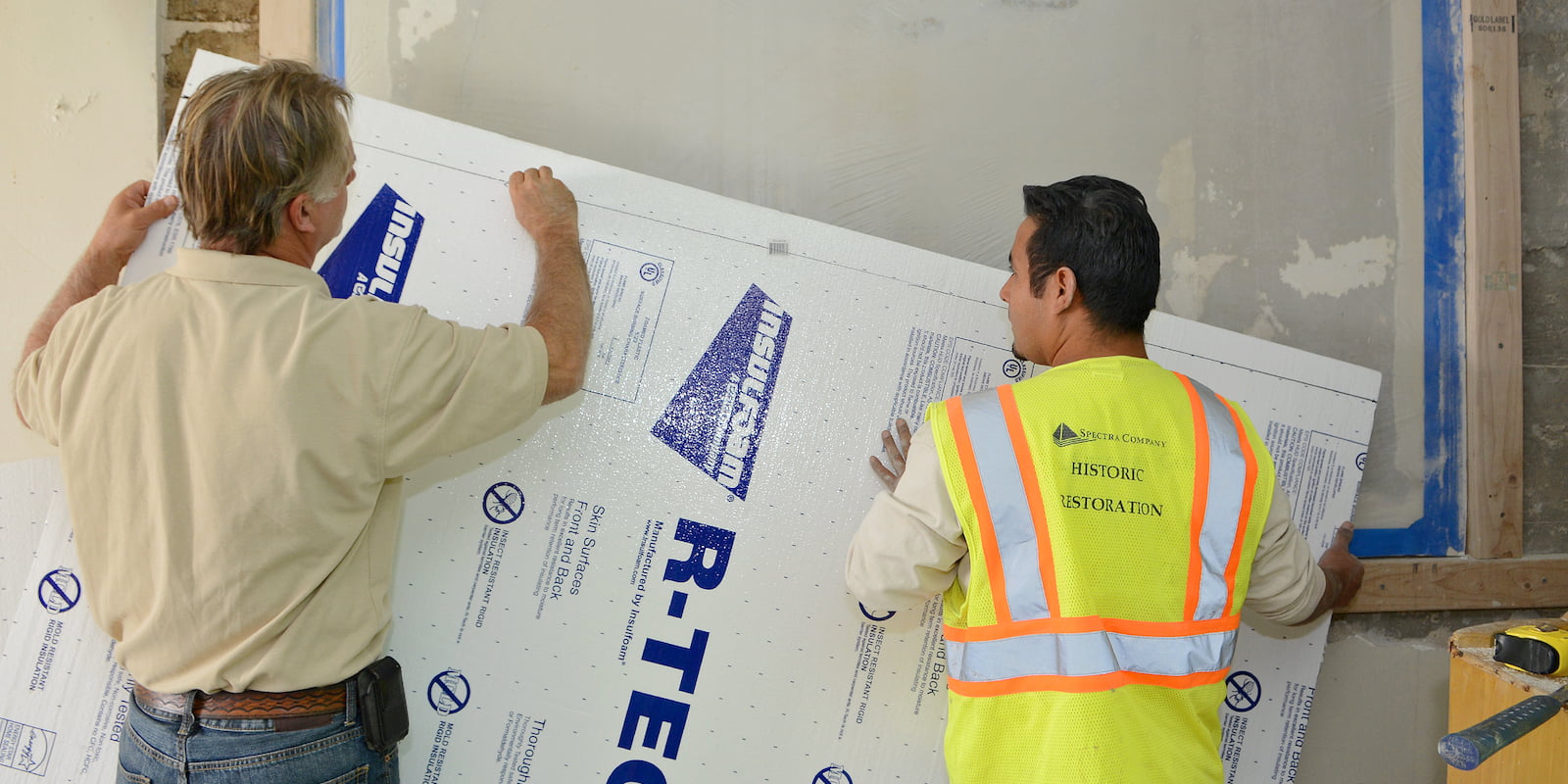The differences between a conventional home and a zero energy home come down to 12 specific elements. Many of these elements, such as equipment upgrades or solar panels, can often be accomplished in existing home renovations almost as easily as in new construction. However, upgrading the insulation value and air tightness of exterior walls is one element that is always more difficult and more costly in older homes. For climate action to be effective, it must include the renovation of the existing housing stock towards zero. For that reason, the challenges of upgrading wall insulation and air sealing must be addressed.
Millions of Homes
The scale of the problem with existing homes is staggering. Sixty-eight percent of the current housing stock was built before 1990 when more robust energy efficiency requirements began appearing in building codes around the US. It’s estimated that 34.5 million homes have wood-framed wall cavities with no insulation at all; millions more have only 4 inches of insulation in 2×4 walls. Air leakage is also a huge problem with 71% of homes with leakage rates above 10 air changes per hour (ACH50). For comparison, a new code-built home might be 4-5 ACH50, while zero energy homes routinely reach 1 ACH50.
It’s understandable that the existing housing stock would be woefully inefficient, but even homes built to current codes fall far short of the most cost-effective level of energy performance. The most advanced building codes seldom require more insulation than will fit in a 2×6 wall cavity. This is not sufficient to cost effectively attain zero energy performance in colder North American climates. To achieve widespread carbon reductions, it’s essential that the large majority of existing homes achieve extremely efficient building shells. While attic spaces and underfloor cavities are relatively easy to access for insulation upgrades, energy improvements to the walls of existing homes are more challenging, but no less essential.
The standard method for upgrading the insulation value of wood framed walls aims to fill the empty wall cavity with dense-pack fiberglass or cellulose insulation. Known as “drill-and-fill,” this method ordinarily achieves only about 23% efficiency improvement, because of remaining insulation voids and the thermal bridging caused by the studs. To reach the necessary level of efficiency usually needed to get to zero, a deep energy retrofit (DER) that can improve efficiency up to 50% is needed.
There are significant obstacles to performing a (DER. The typical approach has been to add more insulation thickness to the outside surface of the wall. This extra thickness creates a challenge for integrating window and door flashing into the weather barrier. Existing siding (cladding) presents another challenge. Should it be removed or left in place? Removal can be expensive, but it would allow acces to the wall cavities so they can be filled with less expensive batt insulation. Leaving the siding and structural sheathing in place saves time and hassle, but requires a different and generally more expensive approach. Big changes to walls also affect window and door openings. It may make sense to replace windows and doors at the same time as the wall upgrade, adding to the cost and complexity of the project.
To address the many issues involved in upgrading wall energy efficiency, Pacific Northwest National Laboratory (PNNL) recently published a report that provides some insight and guidance to the benefits of the various methods for raising the insulation level and reducing the air leakage of walls. The report, titled Wall Upgrades for Residential Deep Energy Retrofits: A Literature Review collects research results on several different wall assemblies that could be retrofitted onto homes and notes that “Done correctly, deep energy retrofits (DERs) can significantly improve the energy performance of a building’s thermal envelope, help manage indoor environmental pollutants, and increase homeowner comfort.”
Wall Upgrade Options
The PNNL report identifies seven wall upgrade options. Most of the approaches have been used fairly extensively and with good results. If the plan is to remove siding and replace windows, then the exterior insulated sheathing approach works well. In this approach, exterior layers of siding and weather barrier are stripped down to the structural sheathing, a new weather barrier layer and flashing is attached. A similar approach, called Thermal Break Shearwall, was recently developed to improve seismic as well as energy performance. Both these approaches enhance overall energy performance, reduce air leakage and improve moisture durability.
Other approaches leave siding in place. Studs attached to the outside create a cavity that can be filled with spray foam insulation. The studs are covered with sheathing and siding. Window openings must be extended, so new windows are usually installed at the same time.
Retrofit Insulated Panels (RIPs) are a novel product that streamlines the effort. RIPs comprise a sheet of rigid insulation, usually expanded polystyrene (EPS), that is glued to an oriented strand board (OSB) sheathing panel. They are similar to structural insulated panels (SIPs) but have sheathing on only one side. The OSB layer faces outward and offers a surface to attach siding. This leads to the nickname “nailbase.”
Another approach that is in development by Oak Ridge National Lab is an insulated siding product with a much higher R-value than products currently on the market. With up to R-10 insulation, this new product could be the easiest and least expensive way to tackle the wall retrofit conundrum.
Dig Deeper
The PNNL report offers a wealth of information on all these approaches, including structural descriptions, energy performance analysis and cost estimates for some systems. No matter what your situation, there should be a deep energy retrofit approach in this report that makes sense for you.

